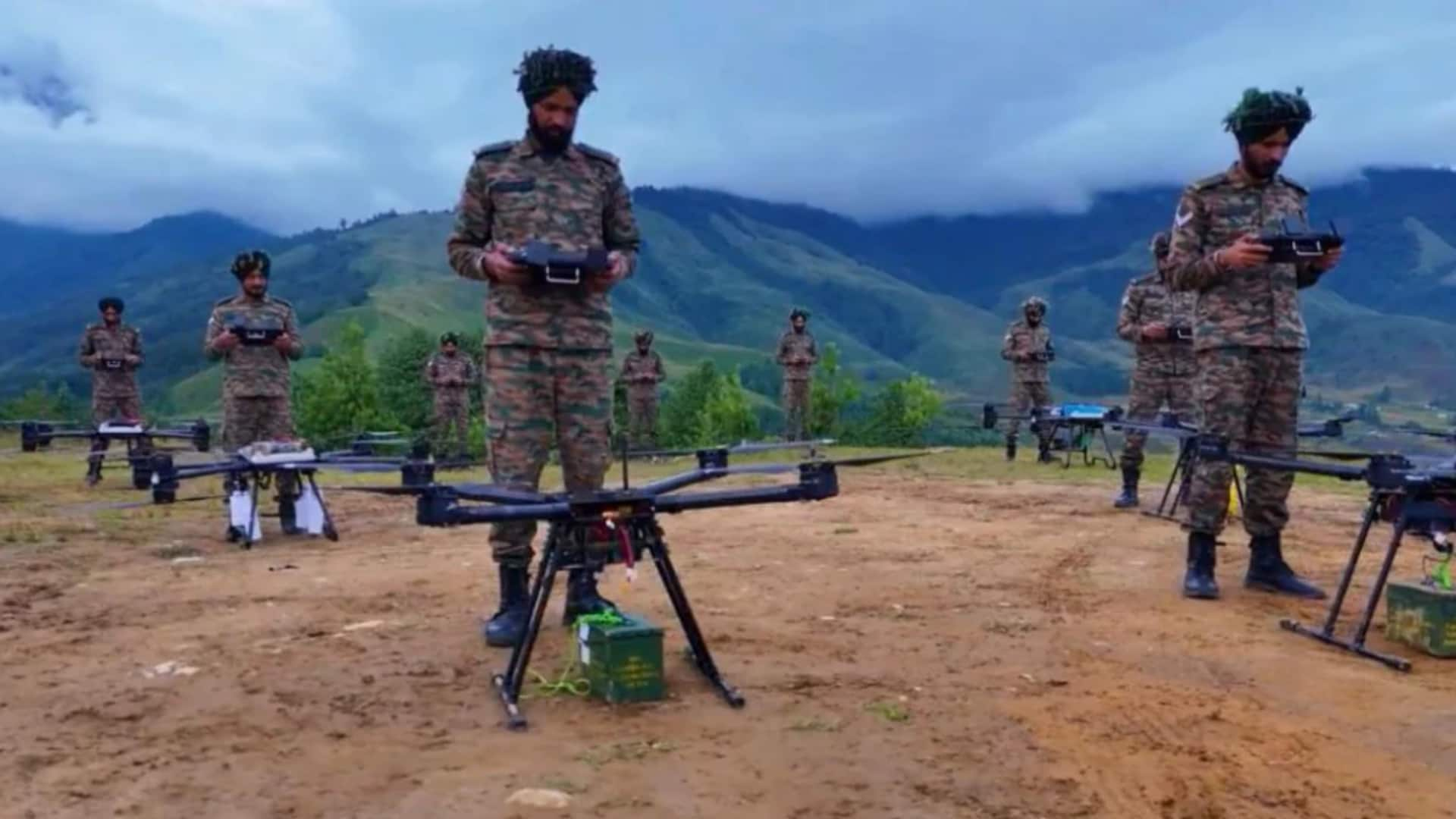
Meet SAKSHAM, Indian Army's indigenous system to neutralize drones instantly
What's the story
The Indian Army has introduced an indigenous Counter-Unmanned Aerial System (C-UAS) called SAKSHAM. The system can detect, track, identify, and neutralize hostile drones in real time. It was developed with Bharat Electronics Limited (BEL), Ghaziabad. SAKSHAM stands for Situational Awareness for Kinetic Soft and Hard Kill Assets Management and is designed to provide a unified command backbone that integrates radars, sensors, soft-kill, and hard-kill capabilities under one "Recognized UAS Picture."
Operational scope
It will secure the Tactical Battlefield Space (TBS)
The system will secure the Tactical Battlefield Space (TBS), which extends up to 3,000 meters above ground level. This expansion was necessitated by recent drone incursions during Operation Sindoor. The TBS includes the Air Littoral, an area of airspace up to 10,000 feet above ground level. SAKSHAM is expected to provide comprehensive airspace security across this newly defined space.
System capabilities
System to enhance situational awareness, shorten kill chains
SAKSHAM comes with features such as real-time threat detection, AI-enabled predictive analysis, and sensor-weapon integration for synchronized response. It also offers automated decision support and 3D battlefield visualization. The system is expected to enhance situational awareness, shorten kill chains, prevent aerial surprises, and facilitate cooperative drone operations in conflict zones. Its deployment is in line with India's Atmanirbhar Bharat initiative for self-reliance in defense technology.
Deployment timeline
Backbone of India's C-UAS grid
The project was approved under the Fast Track Procurement route for speedy deployment across field formations. It is expected to be rolled out to all field units within a year. Once operational, SAKSHAM will form the backbone of India's C-UAS grid, especially for the Air Littoral zone above ground soldiers.